Understanding Power BI vs. Microsoft Fabric
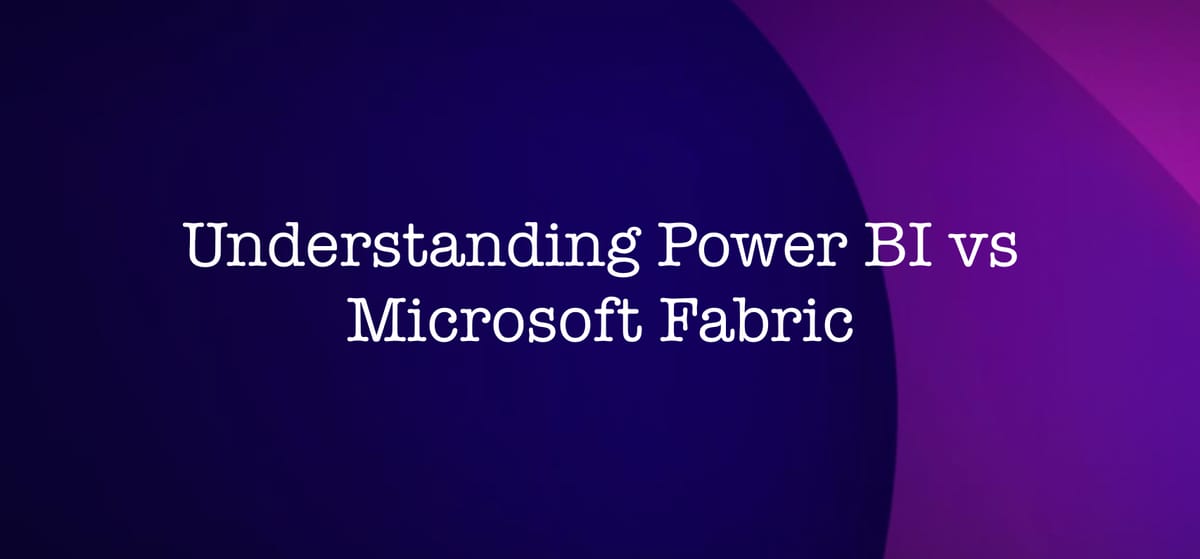
Intro & Context
Over the last 12 months, I’ve supported a number of customers in their planning and implementation of Microsoft Fabric. In almost all scenarios, the first conversation or part of the first set of conversations is around understanding the differences and overlap between Power BI and Microsoft Fabric. I’ve been involved in a number of conversations around the merit or lack of merit in potentially splitting the two products. As a result, I wanted to share the information that usually ends up supporting a key solution decision about whether the required functionality exists as part of the Power BI Pro licensing or if a Fabric (F SKU) capacity would be required.
A Brief History of Power BI Premium
Before getting in to the licensing and functionality conversation, it’s important to understand why there has been some risk of confusion for existing Power BI customers. This comes down to a few primary things:
- Until January 1st 2025, it was possible to purchase a Power BI Premium (P) SKU. For those who are using a P SKU right now, they will have access to Fabric functionality as the feature set is almost identical
- Power BI Premium (P) SKUs can no longer be purchased by new customers, but will be in use and available to any existing customers until the end of their existing enterprise agreement plus the agreed grace period, but content must be migrated to a Fabric SKU thereafter
- Power BI Premium has two licensing models; premium capacities and premium per user (PPU) licensing, the latter of which was made available in April 2021. Both offer extensions to Pro functionality such as XMLA endpoints, AI features, and deployment pipelines - see more details in the comparison on the Microsoft documentation. PPU is sticking around for the foreseeable future, and while it is fundamentally different from the capacity model, most customers I’ve worked with make the decision to either utilise Pro licensing or premium (now Fabric) capacities. Typically, the biggest drivers to choose Premium Per User are where there’s a small user base but one or more key features in 48 refreshes per day, larger model size limits, or deployment pipelines are required.
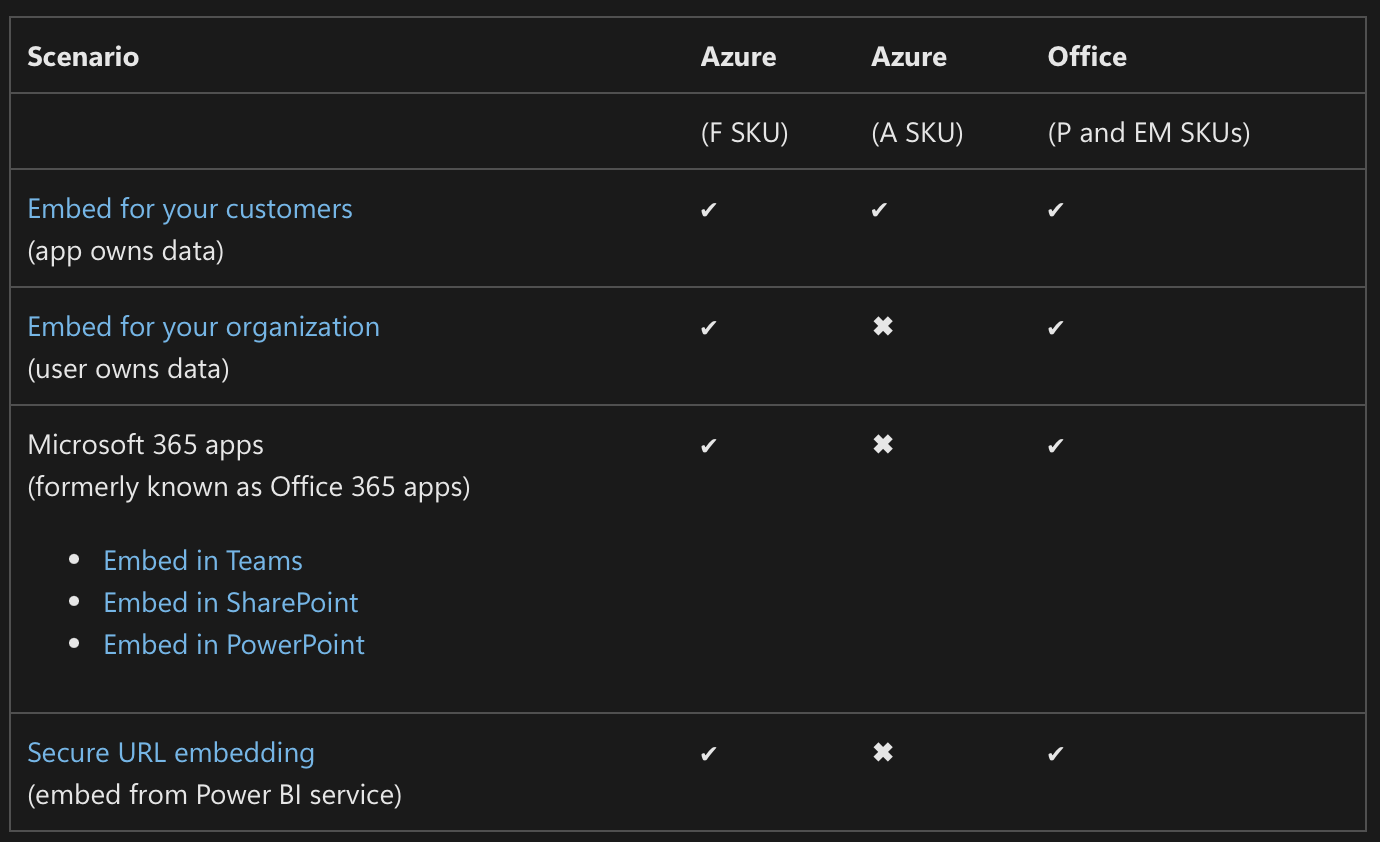
For the purpose of this blog, I've only focused on Fabric SKUs, with a brief mention of Power BI Premium SKUs above but, as highlighted here, EM and A SKUs used to be the primary mechanism for embedding dashboards internally and for customer scenarios. This functionality is possible today with Fabric F SKUs, so I've excluded any further details.
Licensing
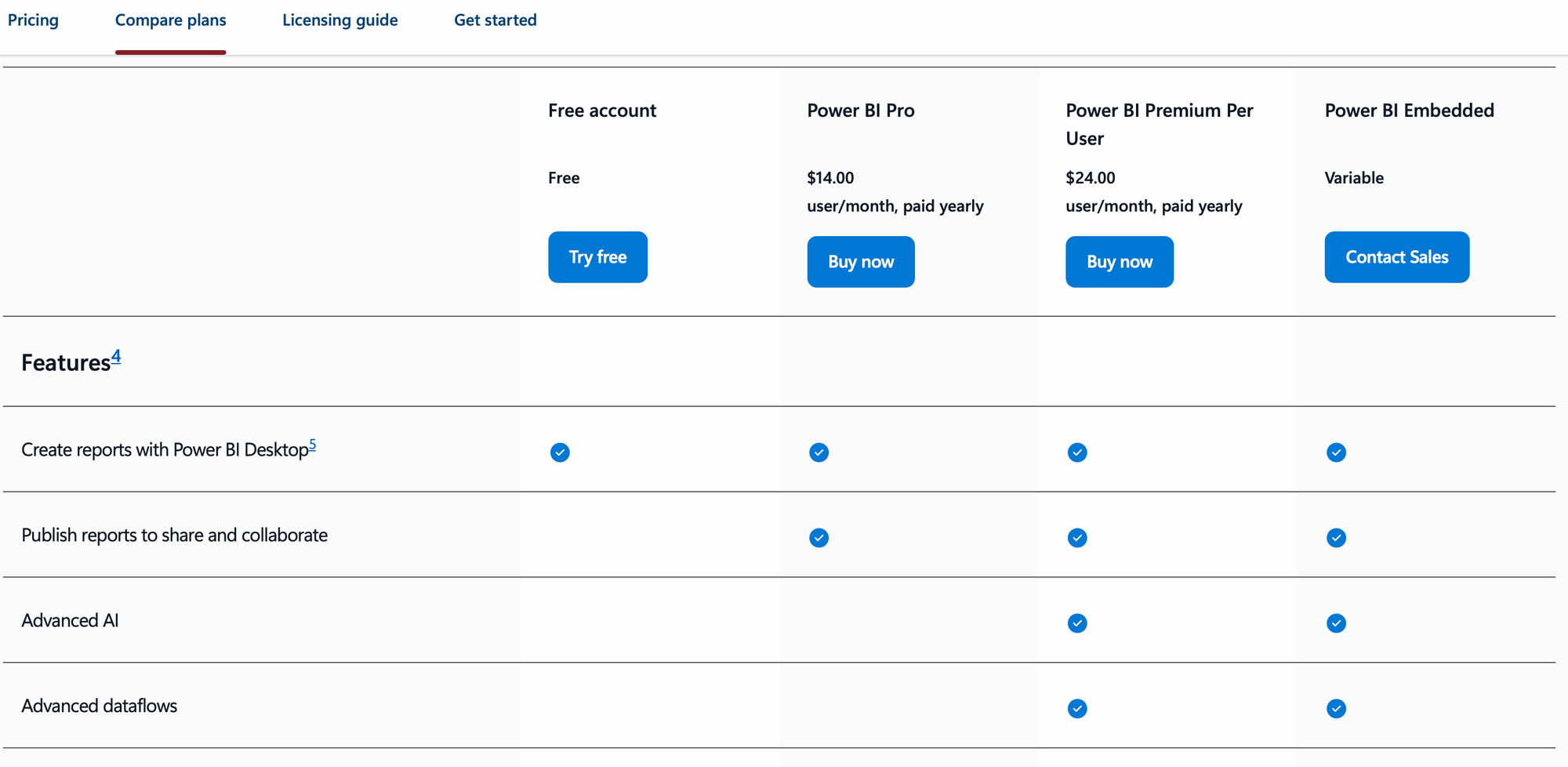
Power BI and Microsoft Fabric have different licensing models, but it’s worth highlighting up front that Fabric is a superset of Power BI functionality (i.e. all Fabric capacities will have full Power BI functionality). Power BI is primarily a reporting tool available as standalone SaaS, while Microsoft Fabric offers a unified analytics platform with various capacities (F SKU). The licensing for Power BI Pro includes basic features for collaboration on reports, dashboards, and scorecards. In contrast, Fabric capacities provide additional elements such as data engineering, data factory experiences, and AI/ML capabilities as well as OneLake and more.

As for pricing, it can get quite complex depending on your specific scenario. The basic components are that Power BI Pro licenses are (as at the time of writing) $14 per user per month, Premium Per User is $24 per user per month, and Fabric capacity pricing depends on SKU size - more details are available through the Microsoft website and SKU Estimator. Where some complexity lies is in the total cost related to balancing requirements around mixed (Pro and Fabric workspaces) environments, workload segregation and cost management, as well as the the fact that Fabric capacities under F64 still require Pro licenses for all report developers and consumers whereas F64+ includes licenses for viewers.
Note: Power BI Desktop, the application for developing Power BI dashboards locally, is free to use. Licensing is only required for publishing to a workspace.
Functionality
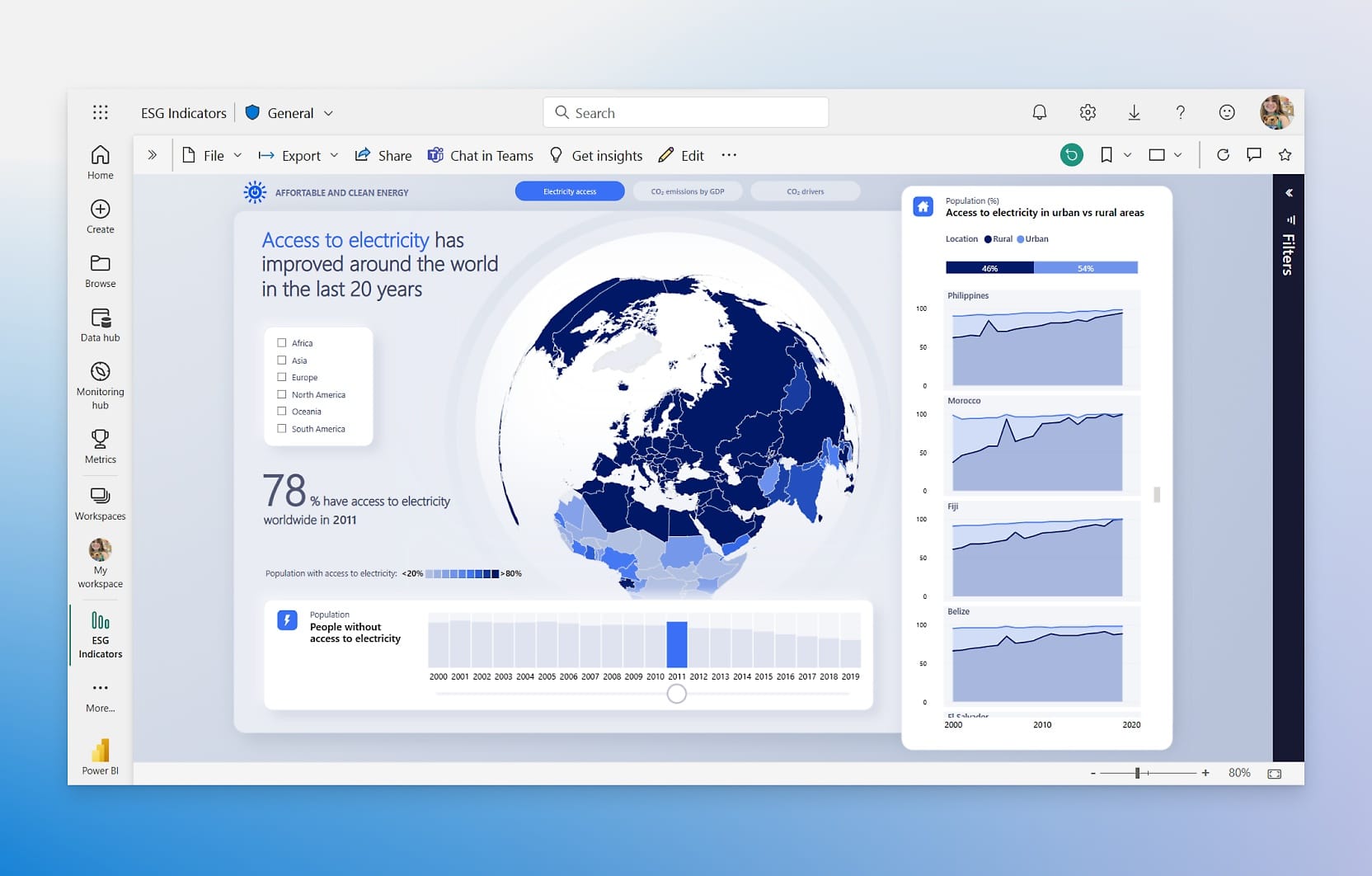
Power BI Pro:
- ETL Development: Power BI Pro enables the use of Power Query through PBI Desktop and Gen1 dataflows. Gen1 Dataflows allow direct query, sourcing data, and incremental refresh but lacks advanced features like publishing to a specific data destination, improved monitoring, integration with data pipelines, and high-scale compute (see more here).
- Data Access - Connectors prebuilt for a range of source systems, both transactional source systems or existing data warehouses.
- Semantic Models - Create and manage semantic models (datasets) that unify business logic, calculations, and definitions to ensure consistency across reports. This includes support for imported (in-memory) and DirectQuery modes for flexible data access and performance . These can be refreshed up to 8 times per day.
- Storage - Each Power BI Pro user receives up to 10 GB of cloud storage for reports, datasets, and dashboards. Each dataset is limited to 1 GB after compression per semantic model.
Microsoft Fabric:

- ETL Development: Fabric supports data engineering and data factory experiences with SQL, R, PySpark, and Realtime intelligence (KQL).
- Storage: Lake-centric architecture using OneLake as a unified storage layer for structured and unstructured data, supporting open formats like Delta Lake and Parquet. OneLake provides a unified data store enabling discoverability and endorsement of data assets. Fabric also supports data warehouses, lakehouses, eventhouses, and more.
- Copilot: Available for F64 Fabric capacities and above until earlier this year, now available for all F SKUs. Often, Copilot for Power BI is highlighted for interacting with Power BI reports, but Copilot in Fabric also facilitates accelerated development of reports as well as data engineering workloads
- Lineage and Governance: lineage itself isn’t unique to Fabric, but the nature of additional features covering ETL processes definitely improves the value proposition. Additionally, enhanced monitoring, and OneLake Catalog governance (screenshot above).

- CI/CD and Orchestration: For CI/CD, deployment pipelines, Git integration, and the Fabric-CI-CD library all offer options for managing your software development lifecycle. Meanwhile, job scheduling and triggering can be configured through various orchestration tools including data pipelines, spark jobs, and airflow.
- AI/ML Functionality: Fabric offers native AI/ML functionality with the ability not only to develop models through Python and R, but also to create ML experiments and models as manageable artifacts. Data Agents in Fabric and Auto ML functions build on this through the ability to rapidly provision agents and execute a number of generative AI functions in a single line of code, and for anything custom there’s also the option for Integration with Azure AI Services.

- Semantic Models: Direct Lake storage mode is available through F SKUs, high-performance, low-latency analytics directly on large datasets stored in OneLake, with no need for scheduled refreshes, as are large semantic models (>10GB up to 100GB). Query caching and configuration for optimizing read performance.
I’ve only described some core functionality above, so it’s not exhaustive and doesn’t include things like the reporting and collaboration features core to Power BI, nor does it include networking, where the use of Data Gateways, private endpoints and trusted workspaces are commonplace for any Power BI deployment.
What about on-prem and local development?
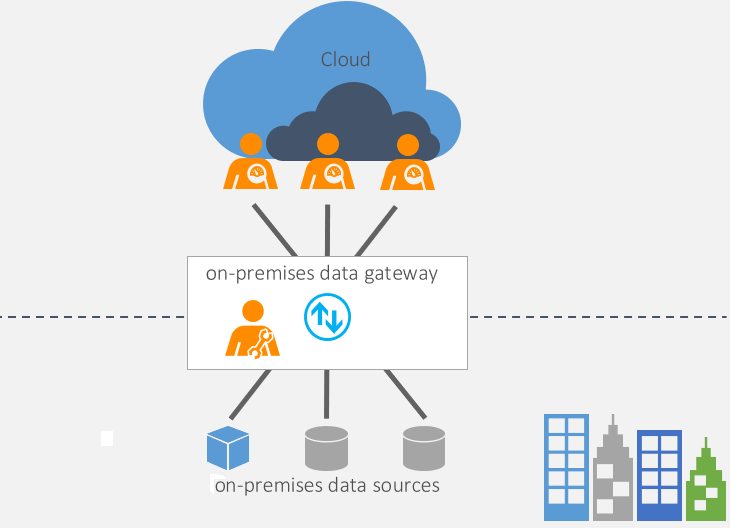
For on-premises and local development, there are a few things worth calling out. First, both Power BI and Microsoft Fabric utilise the same mechanism for accessing on-premises data - on-premise data gateways mentioned above. Where these are used, the analytical assets still exist in the Azure cloud. For on-premises deployment, Power BI Report Server is available and requires Fabric F64+ reserved instances, SQL Server Enterprise Edition with Software Assurance, or SQL Server Enterprise Subscriptions.
As for local development, Power BI Desktop as well as various 3rd party external tools are often commonplace and, in my opinion, still a more comfortable experience than developing wholly through the web GUI. For Microsoft Fabric there are also VSCode Extensions for workspace management and creating user data functions as well as Fabric Data Engineering.
Can I Combine a Fabric and Power BI Pro-backed Workspaces?
The short answer is yes. It’s not as straightforward as just “do” or “don’t” in the sense that the balance depends on your organizational ways of working, but it’s worth mentioning this as an option and I think that it should be considered as a great strategy for workload or capacity management. Workspaces are attached to a Fabric capacity as needed, but if you have a team / domain / function who only use Power BI, do not need enterprise level ETL capability, or are primarily going to connect to centralised semantic models that exist in separate workspaces, it’s entirely reasonable to utilise both Fabric premium attached workspaces and professional-only workspaces.
Conclusion
While Power BI Pro is a great, and mature, reporting tool suitable a range of BI needs, and is available standalone or as a workload within Microsoft Fabric. Fabric offers a more comprehensive solution for organizations requiring advanced data engineering, storage, governance, and AI capabilities and is ideal for organizations seeking an all-in-one solution for the entire data lifecycle. The choice between Power BI Pro and Microsoft Fabric depends on your specific needs but, in my experience, more and more people asking if they need Fabric (not “just” Power BI) are seeing many potential benefits come from either the set of available experiences and functionality, or bringing data processing, storage, and transformation closer to the downstream reporting. Where this becomes more complex is often where a mature data platform is already in place, whereby there are a range of factors that might input to a decision around use of Power BI (pro and premium) or Fabric.